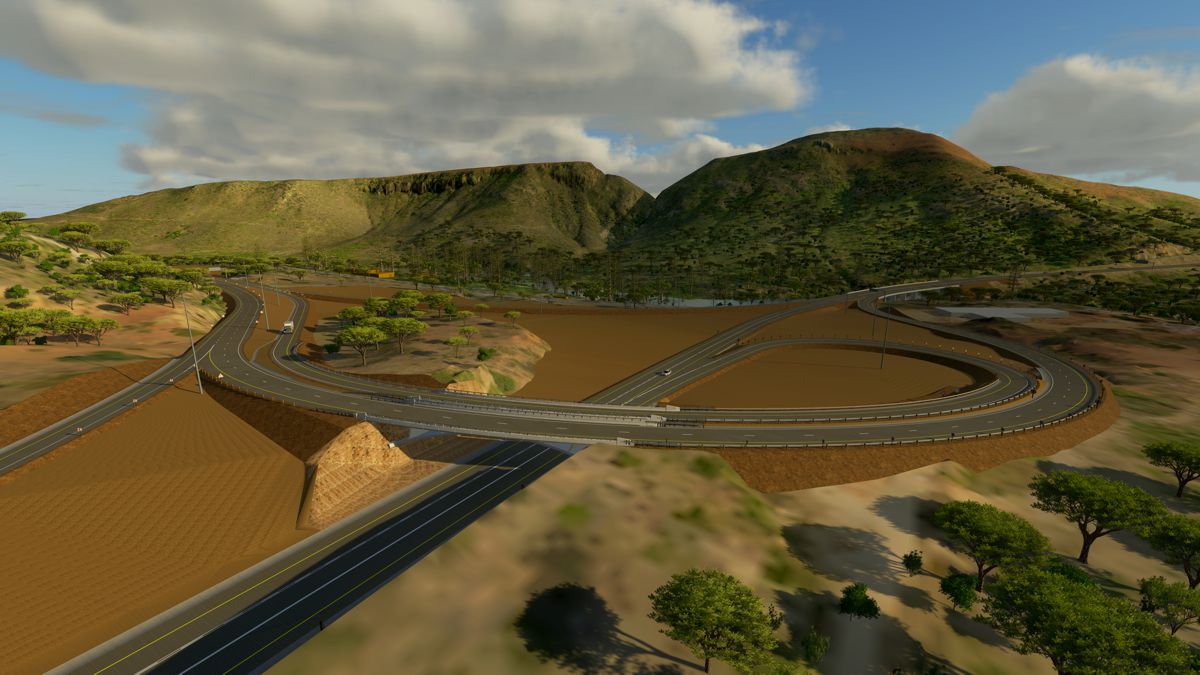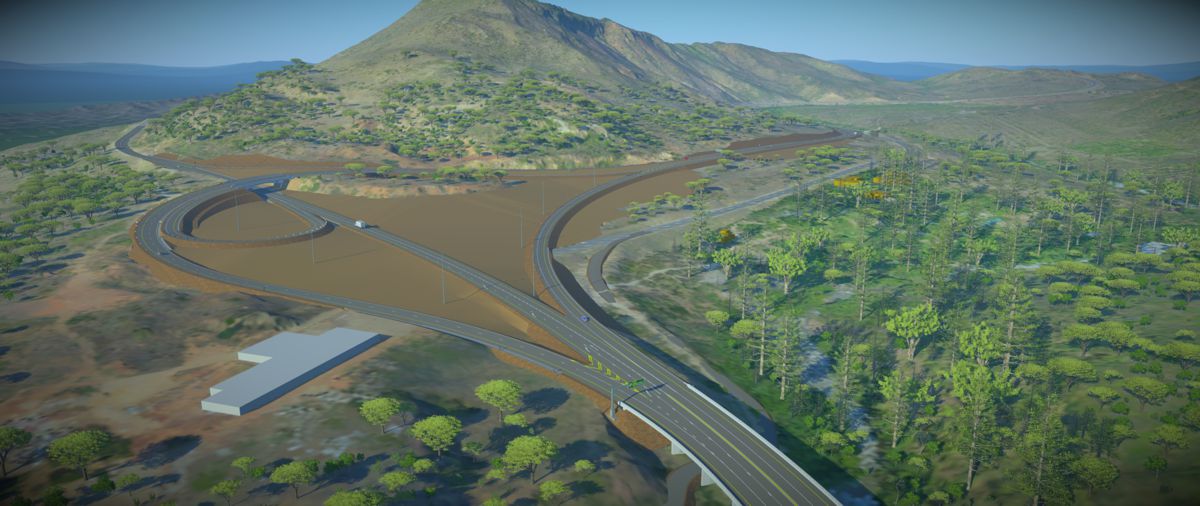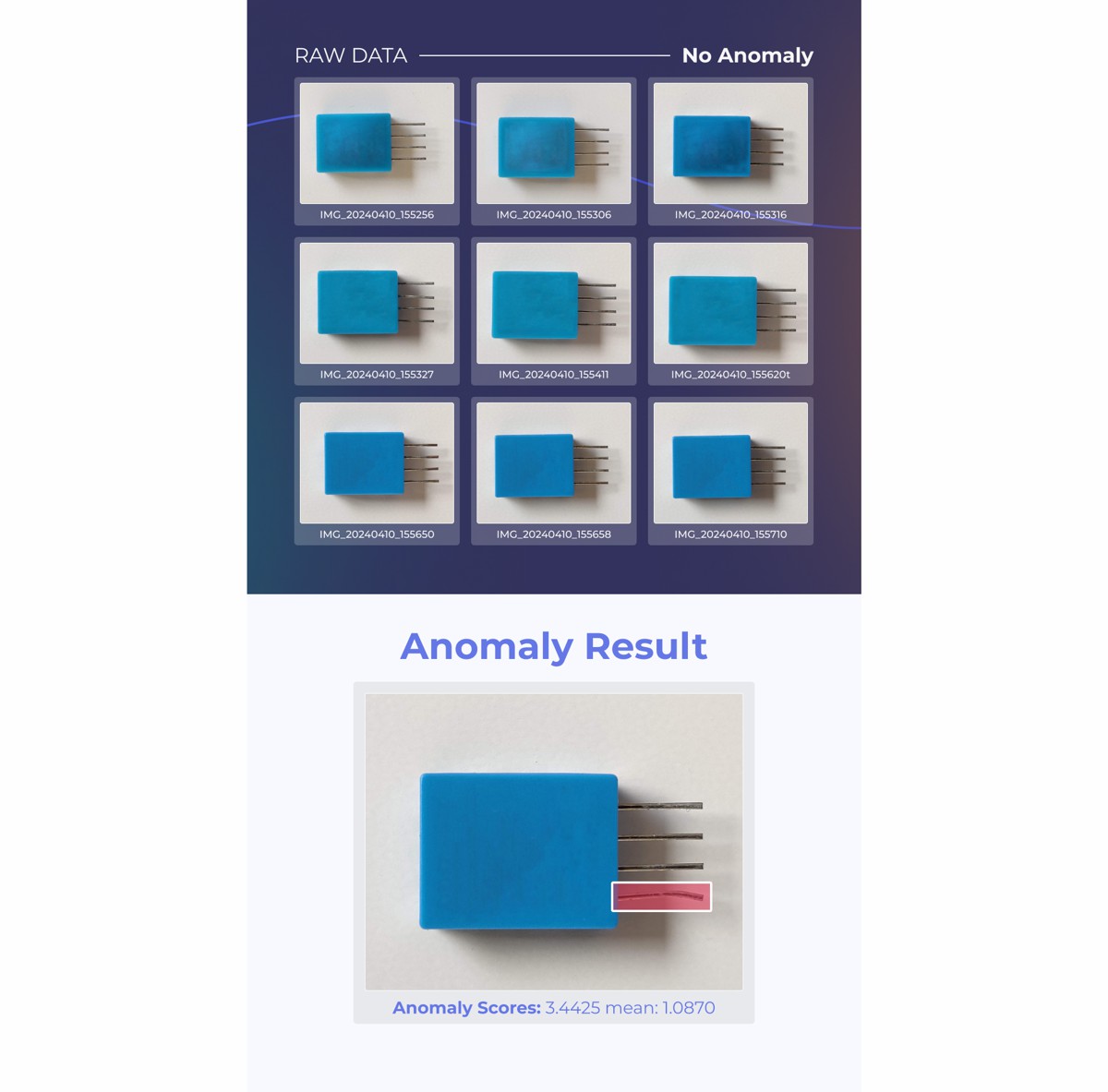Interchange Project in South Africa improved using Connected Digital Environment
Situated along the only east-west route between South Africa, Mozambique, and Botswana, Montrose Interchange is part of the N4 corridor and critical freight transport route connecting the capitals of these three countries. Originally constructed in the 1970s, the roadway and intersection design became inadequate to accommodate current traffic volumes.
To improve traffic mobility and safety, toll concessionaire Trans African Concession (TRAC) initiated a project to upgrade the existing at-grade intersection to the new Montrose Interchange. The ZAR 240 million (US$12.6m) reconstruction set out to not only boost the tourism and economies of South Africa and its two neighbours, but also revolutionize experiences for local motorists, pedestrians, businesses, and communities in the Mpumalanga province.
The project involved the extensive redesign of a portion of the two-lane carriageway into an undivided four-lane highway. The team would need to widen the Crocodile River Bridge, construct two new signature arch bridges, and install high-mast lighting to illuminate the new interchange.
SMEC South Africa was tasked with delivering designs for the new, free-flow interchange. “The requirement was to develop cost-effective solutions to introduce free-flow movements for the traffic between Emalahleni and Mbombela to replace the existing at-grade T-junction,” said Warren McLachlan, professional engineer at SMEC.
Conceptual Design and 3D Visualization
The interchange occupies a narrow space between the Crocodile and Elands rivers amid the steep valleys of the Drakensburg Mountains, which presented difficult terrain for implementing a free-flow intersection.
To retain and integrate much of the existing infrastructure and features of the Crocodile River bridge into the new design, SMEC first needed to develop and submit a cost-effective conceptual design for approval. However, with no existing survey data of the project area available, SMEC faced difficulties generating a conceptual design. “No existing survey was available during the concept design stage, and survey procurement would only take place on acceptance of a viable concept design, placing a difficult task on us,” said McLachlan. Although SMEC has decades of experience delivering rural national transportation projects, the timeframe for the Montrose Interchange was short, and the lack of survey presented a significant challenge under normal conceptual design approaches.
When bidding for the contract, SMEC quickly realized that their traditional, manual 2D strategies would not suffice to meet the project challenges and the requirements to use much of the existing infrastructure.
“In the early concept design stage, where consultants were submitting competing proposals, our typical workflow would have been to sketch out alternatives on a 2D plan and perform some rudimentary calculations to assess the geometric and structural feasibility of the various options. Given the difficult terrain, SMEC realized that this typical manual approach would not work,” said McLachlan.
To allow the client to fully understand the design intent and visualize the complete project prior to construction, as well as streamline multidiscipline workflows during detailed design, SMEC sought to implement 3D photogrammetric reality modelling and collaborative digital design.

Reality Modelling, Collaborative Design, and VR Technology
To begin the conceptual design process, SMEC decided to deploy drones to capture site images and build a reality mesh from the photos using iTwin Capture Modeler, providing accurate context of the topography and site logistics to evaluate potential alternatives for their design proposal.
“We used this scalable mesh as the background for our concept designs, without which we would not have been able to accurately calculate quantities or even assess the geometric feasibility of various [design] options,” said McLachlan.
The digital transition from a 2D to 3D environment offered a new range of opportunities for SMEC’s design engineers to add value, as they could model captured and design data in ways that cannot be replicated by traditional printed drawings. Integrating LumenRT offered a virtual reality environment to visually present and communicate their conceptual design to the client in a real-world context for better understanding of the entire interchange renovation project.
During the detailed design stage, SMEC established a collaborative modelling environment using OpenRoads to integrate bridge and corridor modelling, and overlaid their 3D design model on the scalable reality mesh. The connected digital solution facilitated clash detection, construction simulation, material and earthworks quantities calculations, and design workflow integration across the multidiscipline team.
Prior to digitization, SMEC faced the mammoth task of coordinating and integrating voluminous workflows and data, which are now centralized and streamlined in a digital model that can be automatically updated as the project evolves. Exporting their digital model into a virtual reality environment allowed for real-time stakeholder input and buy-in, and enabled SMEC to further refine the model accordingly throughout design development, ultimately achieving fully digital-driven construction.
“Bringing the entire project into the 3D space, and especially into VR, enabled everyone involved to experience the completed project before construction even commenced,” said McLachlan.

Digital Innovation Sets Benchmark for Future Transport Projects
Bentley applications greatly helped accelerate design iteration with very quick processing and output times, as well as advanced modelling features.
“It helped to produce a final workable design in record time so that construction procurement could proceed on a short timeframe,” said McLachlan. Throughout detailed design, the powerful corridor modelling capabilities and interoperability of OpenRoads facilitated accurate calculations for earthworks and pavement quantities.
It also enabled seamless coordination with the bridge structures design team, minimizing the use of concrete to reduce the overall carbon footprint of the project. Working in a connected digital environment streamlined workflows, reducing modelling time by approximately 2,500 hours, saving ZAR 2.5 million (US$130k) in design costs. Combined with iTwin Capture Modeler, the integrated 3D digital design solution also helped tailor the interchange design to minimize environmental impact, avoiding protected trees and vegetation.
At the start of the project, SMEC intended to develop the design with 3D visualization as the end product, producing traditional 2D drawings for construction. The challenges of delivering a conceptual design forced SMEC to find innovative digital solutions using 3D modelling and virtual reality. They changed their mindset from visualization as a side project to part of the model development and communication process.
The project was used as a digital engineering learning and development opportunity to build up SMEC’s digital 3D design workflows and library of 3D assets—such as road signs, drainage structures, and light masts—that can be applied to a variety of other South African transport projects. Its success has paved the way for virtual reality (VR) to be applied to future projects with much less effort. “The long-term plan is that ‘going virtual’ will just be a matter of clicking the right buttons,” said McLachlan.
Article by Oana Crisan, product marketing manager focused on civil design engineering solutions and applications at Bentley Systems. She is responsible for the development of go-to market strategies, creating consistent messaging and content, and enabling sales to achieve new business growth. She holds a BA in business information systems from Dublin Business School, Ireland, and a BA in international relations and European studies from Petru Maior University, Târgu Mureș, Romania.














